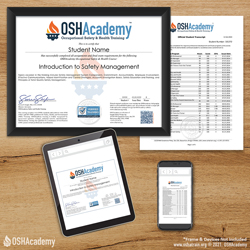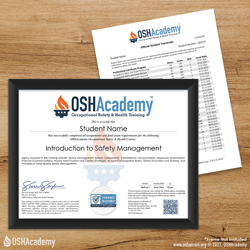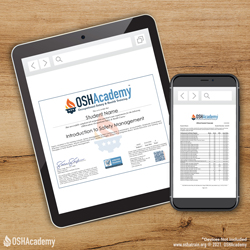Introduction
According to the OSHA Act, every employer is legally obligated to provide a workplace that is free from known hazards. This course will teach you how to create an effective, proactive safety management system using methods that have been successful across various organizations.
This course discusses the following elements of a successful safety management system:
- Commitment and Leadership
- Accountability
- Safety Involvement
- Safety Communications
- Hazard Identification, Analysis, and Control
- Accident Investigation
- Education and Training
- Continuous Improvement
Course Objectives
At the end of this course, you should be able to:
| ID | Objective |
|---|---|
| TO 1.0 | Achieve a minimum score of 70% on the final course assessment. |
| LO 1.1.1 | Define and describe examples of management safety commitment and leadership. |
| LO 1.2.1 | Define accountability and describe examples of an effective accountability system. |
| LO 1.3.1 | Describe strategies to increase involvement in safety. |
| LO 1.4.1 | Discuss the various methods to effectively communicate with others. |
| LO 1.5.1 | Describe hazard identification, analysis, and evaluation methods. |
| LO 1.5.2 | Discuss the "Hierarchy of Controls" model as a strategy to control hazards. |
| LO 1.6.1 | Describe the steps in an effective accident investigation. |
| LO 1.7.1 | Discuss the basic requirements for safety training. |
| LO 1.8.1 | Describe W. Edward Deming's 14 Points and how they apply to safety. |
Key: Terminal Objective (TO), Learning Objective (LO)



